The Future of Technology Governance and Global Development: Why DG Brought DataReady In-house
As digital tools proliferate, automated analysis and decision-making algorithms spread, and cyberspace becomes more geopoliticized and contested, Development Gateway: An IREX Venture (DG) has strengthened its belief that data and digital solutions are key in creating more effective, responsive, inclusive, and trusted public-serving institutions. In an effort to further enrich our current data governance services, we’re pleased to announce that DG acquired DataReady in 2024. Founded in 2018, DataReady was a social enterprise with a mission to help the sustainable development and humanitarian sectors navigate the complexities of data governance.
At DG, we define data governance as the processes that establish the rules and norms related to data collection, management, and use. We believe that data governance processes within decision-making bodies should be inclusive, participatory, transparent, accountable, and led by multiple stakeholders.
Fundamental to DataReady’s ethos was that data governance is primarily about the processes through which rules and norms are set; these rules and norms, in turn, shape data collection, management, and use. Based on this understanding, DataReady’s approach was to engage with the institutional and individual-level dimensions of the digital and data revolutions, ensuring that human rights-based approaches and ethical standards are baked into innovation and policy. This approach aligns well with DG’s standard of prioritizing local ownership and governance of data and creating “fit for context,” sector-specific approaches to data governance frameworks that enable their long-term use.
Both DG and DataReady also share a commitment to strengthening institutions, empowering individuals, supporting youth, and designing and implementing digital and data programs that improve people’s lives. Continuing to build out DG’s data governance advisory capacity through adapting the innovative DataReady approach is an exciting step toward both implementing and advocating for a better, fairer future for digital development across the globe.
Check out the full video in which DG’s CEO Josh Powell and DataReady founder Tom Orrell discuss the ways in which this new consolidation will further strengthen DG’s data governance service offerings and capacity to embed strong digital and data governance practice at the core of every DG project and engagement.
Connecting Digital Dreams to Infrastructure Needs: Three Lessons from the aLIVE Program
Eighteen months ago, we launched the aLIVE program in Ethiopia. After a year and a half of hard work, we’ve made strides towards meeting the program’s ultimate goal of supporting Ethiopia in achieving food security and building a more robust, independent economy. We’re doing this by supporting Ethiopia in improving the accessibility and reliability of its livestock data. Along the way, we’ve learned three valuable lessons that have improved our ability to support our partners in Ethiopia in advancing their livestock data systems while also building capacity in order to optimize management, operations, and use of their data systems after the aLIVE program ends.
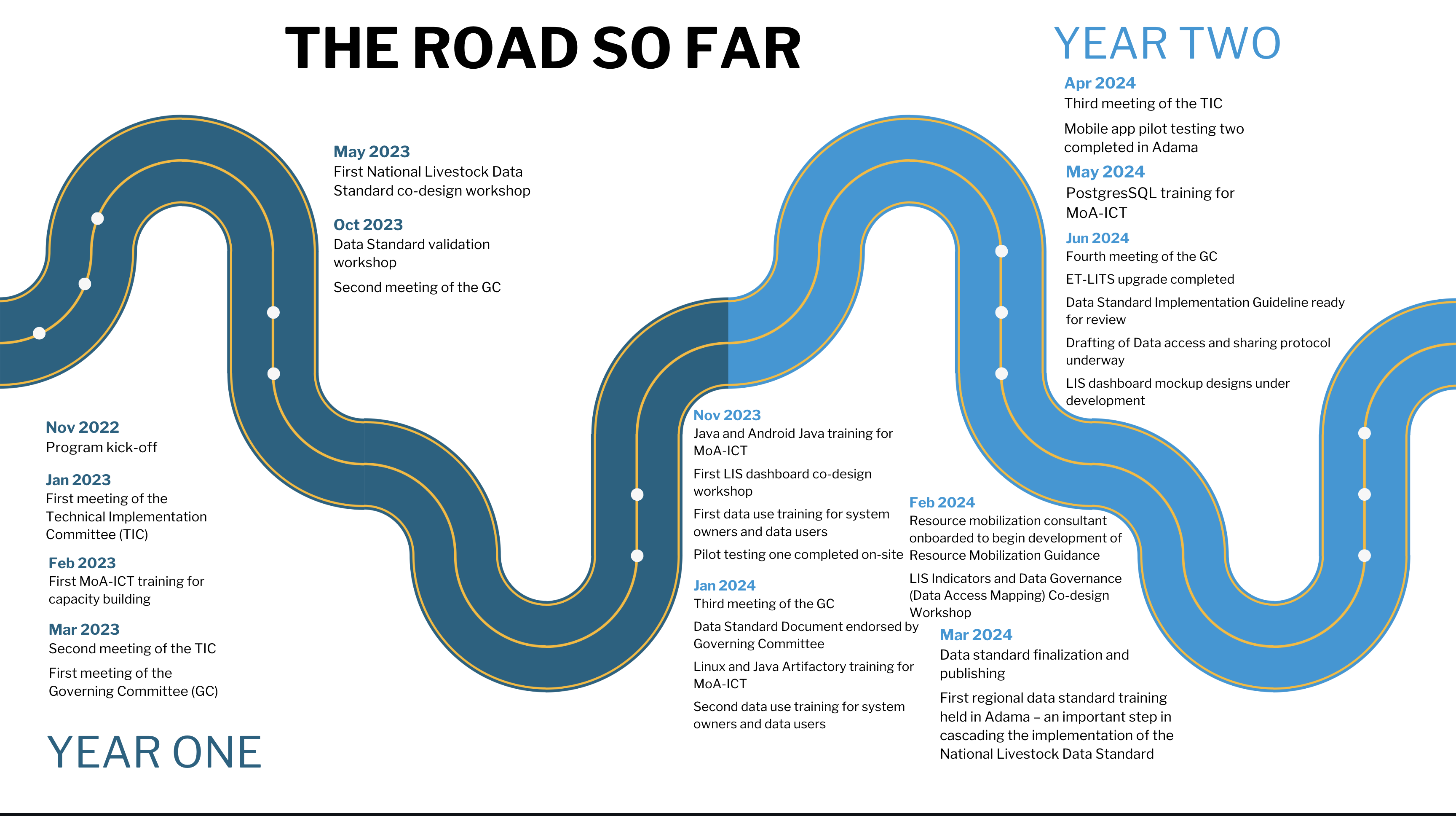
Lessons learned
- Create trust and sustainability through co-design: Through aLIVE, we’ve continued to learn that prioritizing co-design deepens the impact of the program’s work, strengthens partnerships while expanding trust, and makes the work more sustainable in the long run.
Throughout DG’s work, co-design has been prioritized to foster trust and collaboration between DG and those living and working in the communities impacted by our programs. With aLIVE, we’ve maintained our approach to co-design by ensuring that collaboration is embedded at every level. In addition to a series of workshops and discussions with partners to develop the Data Standard (a guide to standardize data collected on cattle, sheep, goats, and camels), we also used a co-design process to develop the Livestock Information System (LIS) dashboard, which is a platform that will provide decision-makers with access to interoperable data from Ethiopia’s pre-existing livestock data systems, and to identify data indicators that are aligned with stakeholders’ needs and once in place, will help the user find the information they need.
We’ve seen positive outcomes from our co-design approach, as evidenced by leadership and major national level livestock actors actively giving feedback and providing concrete goals for how the work done in aLIVE will change the way Ethiopia’s livestock stakeholders will use tools developed through the aLIVE program. Stakeholders have been actively involved throughout the program indicating that they are deeply invested, feel a sense of ownership, and—because of this—that the work done in aLIVE will likely continue beyond DG’s direct involvement.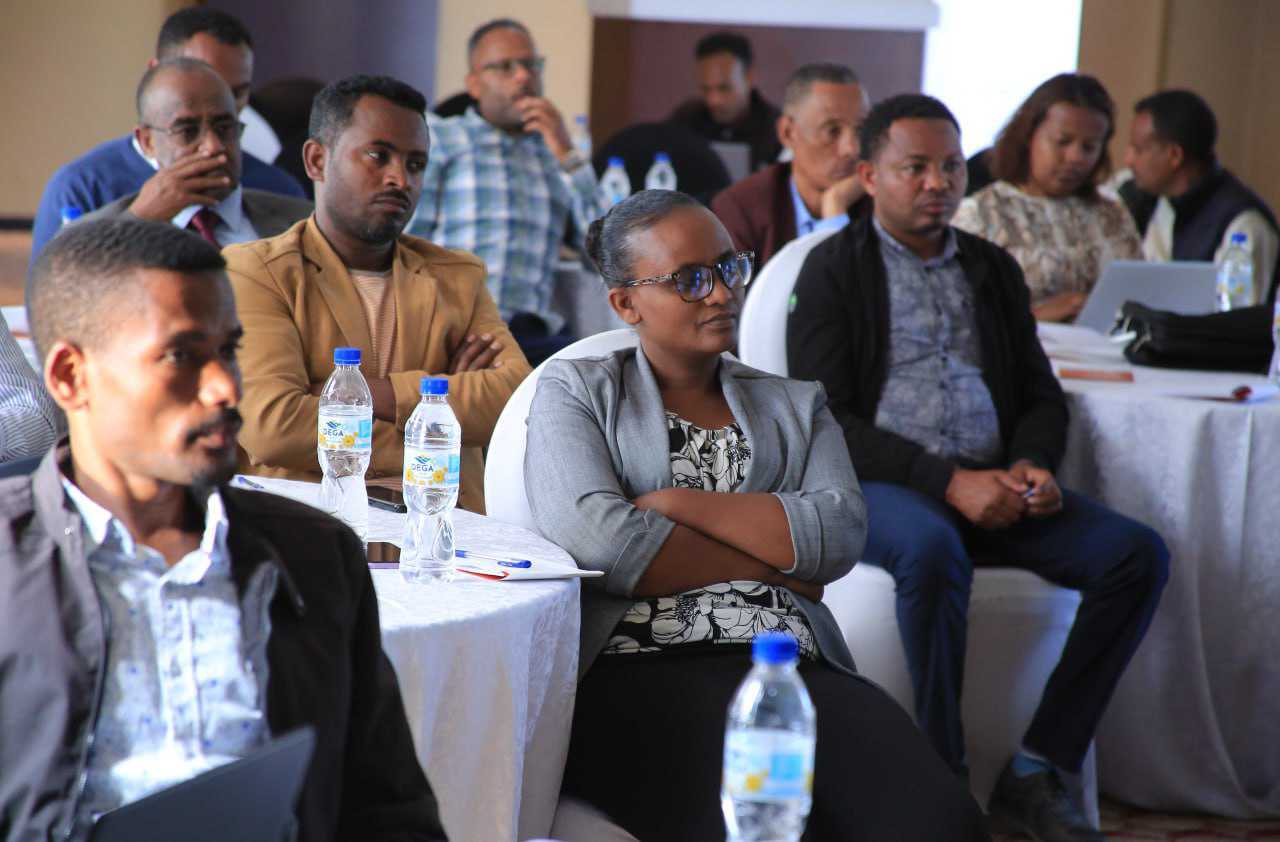
LIS Co-Design Workshop - Advance collaborative work by embedding staff and establishing governance structures: In aLIVE, we’ve also strengthened our partnership with Ethiopia’s MoA and other stakeholders by embedding staff with multiple teams at the MoA. This approach of embedding staff has also improved DG’s understanding and awareness of the livestock-sub sector, which has allowed us to have better interaction with stakeholders.
While embedding staff isn’t uncommon, we ensured that our embedded staff were able to be full-time with the team(s) on which they were embedded. This allows these staff members to better share DG-developed resources while being fully committed to the program’s work from our partner’s side. Embedded team members were on such teams as programming, software engineering, and data analysis.
While embedded staff members were able to advance aLIVE’s work from within our partners’ teams, we also established two governance structures in the form of a Governing Committee (GC) and the Technical Implementation Committee (TIC) in order to facilitate buy-in from stakeholders at different levels and with different expertise. The GC is the final decision-making body and provides overall governance, strategic direction, and support for the sustainability of aLIVE’s work. Its members include the State Minister, national minister leadership from the MoA, the Ministry of Trade, and representatives from other organizations within the MoA (such as owners of the other data systems managed by the MoA). The TIC includes experts who provide technical guidance, support, and expert advice for the aLIVE project team.
Through both committees, stakeholders have a constructive space to highlight gaps, opportunities, and resource needs that the broader government leadership can take under advisement. Therefore, communication between implementers and decision-makers is more direct and timely. Additionally, the governance structures have created more visibility around aLIVE’s work at a high-level within Ethiopia’s government, which has allowed DG to connect with related development projects, which supports alignment and knowledge sharing throughout the government and across programs.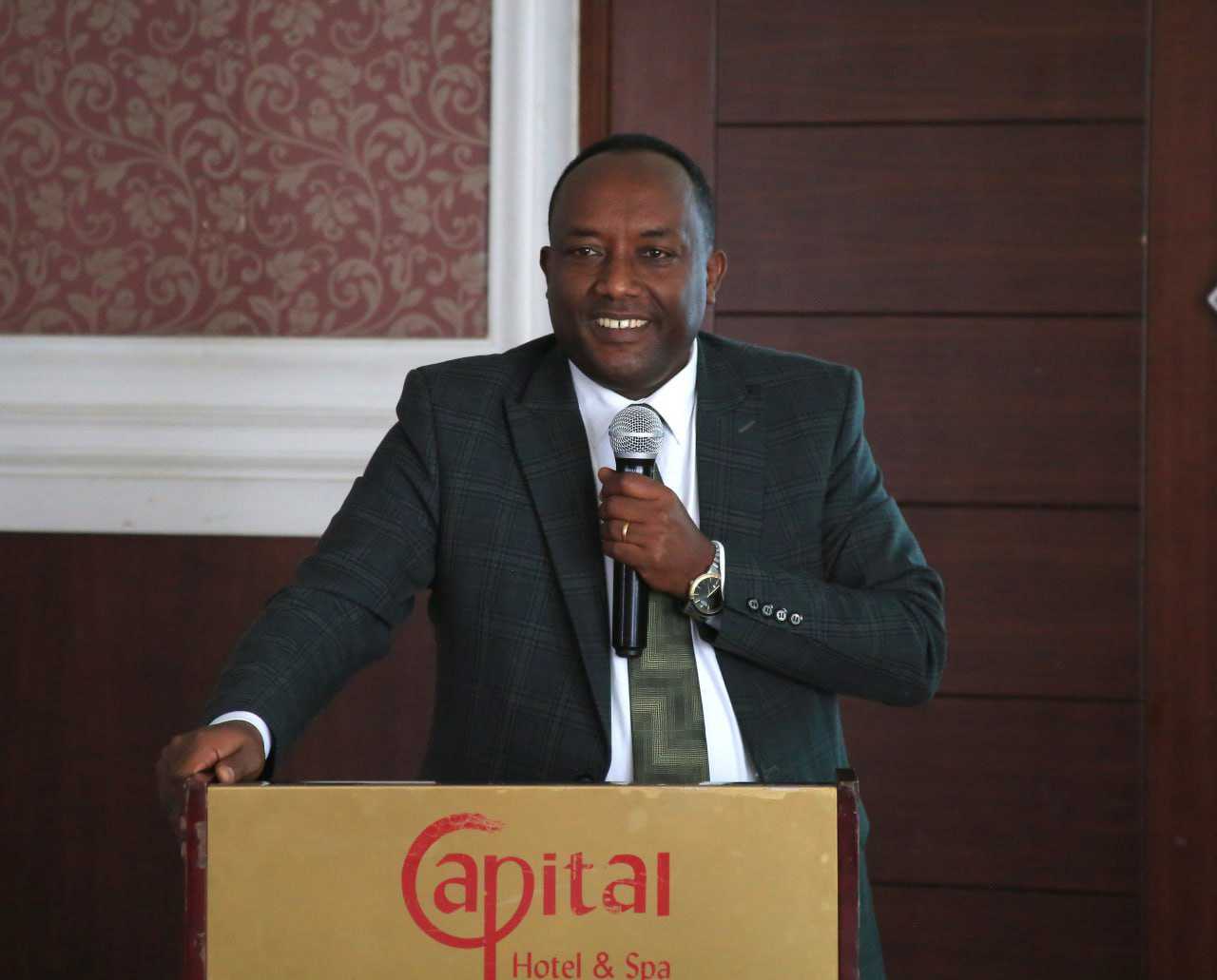
Prof. Alemayehu Regassa, aLIVE Program Senior Advisor - Increase sustainability by ensuring program recommendations and approaches align with partners’ needs and resources: Because a key component in aLIVE’s work is streamlining and expanding livestock data as well as increasing access across data systems, we explored which type of infrastructure is best for our partners: cloud infrastructure or on-site servers. After detailed deliberations, the MoA opted to continue with the on-site servers which were recently installed, recognizing that investment had gone into developing these state-of-the-art server facilities. After all, the on-site servers suited the needs, wants, and technical capacity of the MoA. In making this decision, we were able to support self-management, operations, and sustainability by understanding the local context, the government’s digital infrastructure aspirations, and the government’s technical capacity.
As part of this effort to advance sustainability and support our partners in Ethiopia, we trained relevant MoA staff on the new data management information systems built through aLIVE. This training was intended to expand the MoA staff’s capacity and was tailored to their backgrounds and needs. We also developed an on-demand training after participants expressed an eagerness to continue learning about new technologies beyond this initial training.
MoA-ICT team training
Looking forward
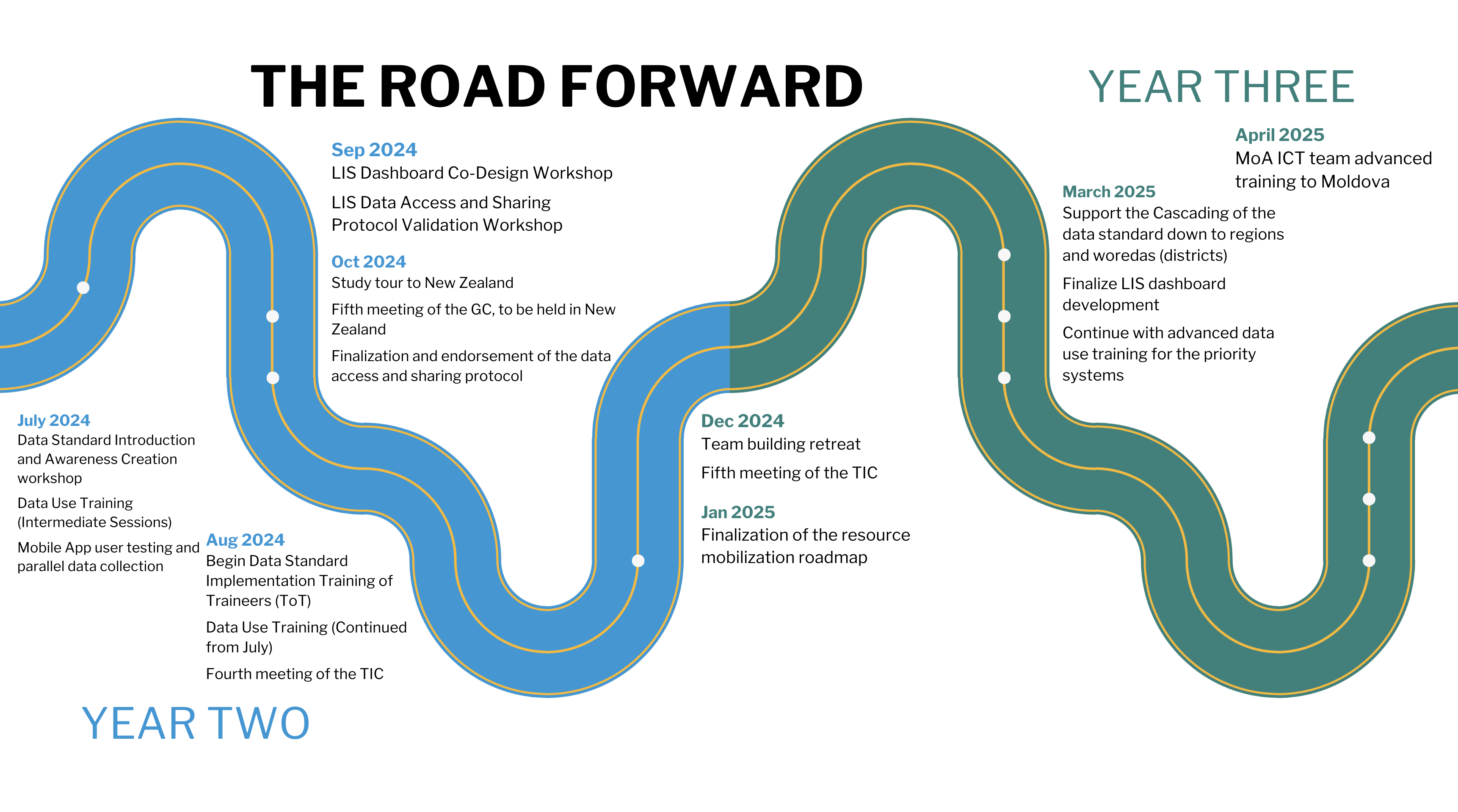
As we mark a year and a half of the aLIVE program, we also approach the halfway mark of the program itself, which is set to end in 2024. In reflecting on the lessons we’ve learned so far, we’re excited to see continued progress and learning in the next half of aLIVE.
Going forward, we’ll move into implementing the Data Standard; we will also continue to implement a mobile app which will simplify the process of recording livestock data in both offline and online modes. The app will eventually be handed over to the team at the MoA and those managing the Ethiopian – Livestock Identification and Traceability System (ET-LITS). Finally, the aLIVE team is planning a study tour to New Zealand in late 2024 in order to identify best practices from the country’s livestock data system that can be implemented in Ethiopia.
If you’re interested in receiving more detailed updates on the program’s activities, sign up for our quarterly newsletter.
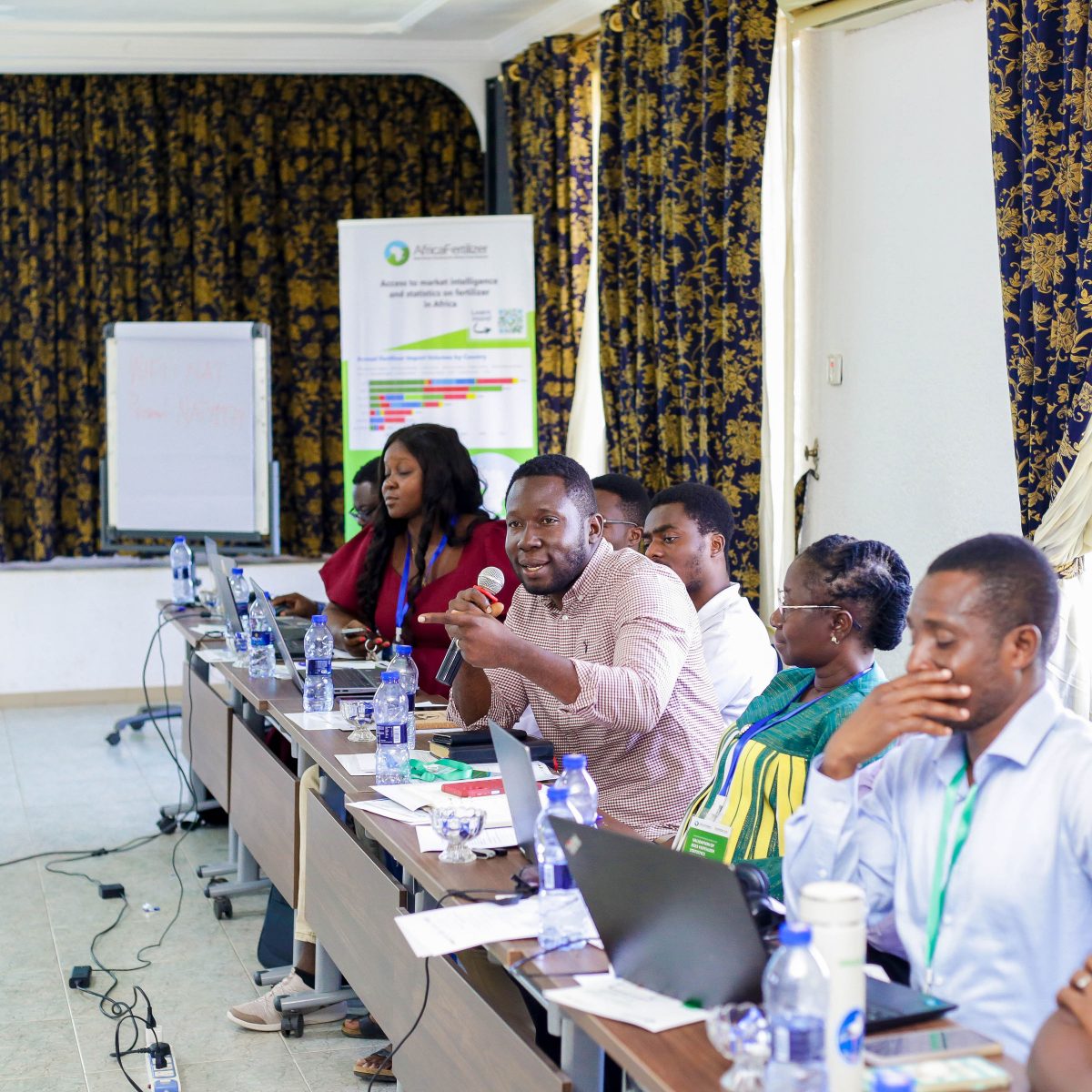
Case Study: Fostering Sustainable Agriculture through Data-Driven Collaboration and Partnership: Ethiopia, Mozambique, and Nigeria
Through DG’s Visualizing Insights on Fertilizer for African Agriculture (VIFAA) program, we recently published a case study titled “Fostering Sustainable Agriculture through Data-Driven Collaboration and Partnership: Ethiopia, Mozambique, and Nigeria.” It dives deep into how the VIFAA program has impacted the fertilizer data and markets in Ethiopia, Mozambique, and Nigeria. In this blog, we explore the overall impact that the VIFAA program is making, review why the program is needed, and offer some key highlights from the case study.
Fertilizer Data in Context: Why the VIFAA Program is Needed
Significantly contributing to low agricultural productivity, African fertilizer consumption has historically lagged behind other regions. As of January 2023, Africa consumes only about 10% of the global average for fertilizer use. Limited access to affordable fertilizers, inadequate infrastructure, and challenges related to financing and knowledge dissemination are some of the factors that contribute to this disparity. However, a concerted effort by governments, non-governmental organizations, and international agencies is gradually changing this situation by promoting sustainable agricultural practices and increasing fertilizer use, which overall will improve agricultural productivity and increase food security.
These efforts to boost fertilizer usage often include providing subsidies, improving distribution channels, and raising awareness among farmers about the benefits of fertilizers. Despite these initiatives, the sector has long struggled with fragmented data, leaving decision-makers without a solid foundation for evidence-based approaches.
Over the past few years, stakeholders have adopted a more strategic and data-driven approach, fostering a better understanding of farmer needs and key data sets such as imports, exports, and crop-specific formulations. This shift has also encouraged organic trust-building between private enterprises and the governments in which they operate.
Robust partnerships have been instrumental in this transformation. The International Fertilizer Development Center’s Data Initiative, AfricaFertilizer, Development Gateway: An IREX Venture, and Wallace & Associates, supported by funding from the Bill and Melinda Gates Foundation, have collaborated to enhance the availability of validated fertilizer data across eight African countries through a shared initiative: the VIFAA program. The VIFAA program simplifies existing, validated metadata into more accessible visual formats. VIFAA provides policymakers and the private sector tools to improve decision-making through interactive, country-specific dashboards and web-based solutions.
The VIFAA program has benefited the target countries and established foundational data for the African Union Commission’s Comprehensive Africa Agriculture Development Programme. Covering Nigeria, Ghana, Kenya, Ethiopia, Senegal, Malawi, Zambia, and Mozambique, VIFAA has revolutionized the fertilizer data landscape. Policymakers can now instantly access fertilizer balance sheets, price movements, stock positions, and traded volumes. Private companies can stay agile in volatile markets, ensuring a consistent supply of fertilizers for farmers.
Highlights from the Case Study
Under the VIFAA program, three countries—Ethiopia, Mozambique, and Nigeria—have particularly stood out, registering significant impacts across the board. This case study, “Fostering Sustainable Agriculture through Data-Driven Collaboration and Partnership: Ethiopia, Mozambique, and Nigeria,” delves into the transformative effects of the VIFAA program in these three nations, providing a comprehensive understanding of its impact and highlighting the pivotal role of data and strategic partnerships in driving agricultural development in Africa.
Some key positive outcomes, which are explored in more detail in the case study, include how:
- Developing a country-specific dashboard for Ethiopia addressed some of the country’s concerns related to ensuring stakeholders have clear information on the global fertilizer market dynamics and that this information is trustworthy and trusted;
- Establishing Fertilizer Technical Working Groups in Mozambique created a primary point of validation on any statistics and the impact this has; and
- Creating the Nigeria Fertilizer Dashboard facilitated private sector actors to crowdfund in order to support the creation of additional nuanced datasets that VIFAA has been able to provide during the past two years.
Read the case study to discover even more about VIFAA’s successes in these countries and to learn more about how initiatives like VIFAA pave the way for a more productive and sustainable agricultural future on the continent.

Stakeholder, Where Art Thou?: Three Insights on Using Governance Structures to Foster Stakeholder Engagement
Since Development Gateway: An IREX Venture’s (DG’s) founding, we have prioritized working closely with multiple stakeholders—including everyone from local technical experts to government ministries and global partners—when developing digital solutions and gathering data. Through our Tobacco Control Data Initiative (TCDI) program and its sister program Data on Youth and Tobacco in Africa (DaYTA), we have learned that creating governance structures, such as advisory boards or steering committees, is one approach to ensuring that digital solutions appropriately meet stakeholders’ needs and foster future engagement from them. In this blog, we explore three insights on how governance structures can advance buy-in with individual stakeholders while connecting them to one another.
Why Governance Structures?
Governance structures—which are best practice to have when conducting primary research—have been essential to DG’s tobacco control work, because many of our stakeholders have indicated their desire to be included throughout program implementation and not just at the end. Several have echoed the common refrain: “You can’t do something for us without us.” We’ve also found that governance structures help coordinate collaboration across our stakeholders, especially since we have a group of stakeholders with very different backgrounds, expertise, and areas of interest in our tobacco control work. These stakeholders also all have different perspectives and varied ways in which they engage with our work. Therefore, DG has formed various governance structures in both our TCDI program and DaYTA program.
The Role of Governance Structures in TCDI and DaYTA
DG formed two advisory boards in the first phase of TCDI: one in the Democratic Republic of the Congo (DRC) and one in Zambia. These advisory boards ensure that stakeholders are updated when the program meets key milestones, including when data, needs assessments, and research protocol are validated; the boards also supported the launch of illicit trade studies in the DRC and in Zambia.
DG’s successful implementation of these governance structures in TCDI paved the way for the formation of the following governance bodies to support DaYTA:
- A new Advisory Board in the DRC (building off the one from TCDI),
- The Survey Implementation Group and the Youth Advisory Group in Nigeria, and
- The Research Advisory Committee in Kenya.
All of these structures have a similar composition and a shared mandate; each one consists of a small group of technical experts who provide technical direction and advice on the research implementation on youth tobacco use in Kenya, Nigeria, and the DRC.
DG also formed a steering committee in the DRC. Its purview is more strategic and less technical relative to the advisory board; it is led by a high-level public official from DRC’s Ministry of Health and includes stakeholders from civil society organizations, government, academia, and partners in tobacco control (like the World Health Organization) who are working to align the research with government policy.
Additionally, to ensure coordination across countries, we also convened a meeting of the full DaYTA consortium with representatives from all three countries—in-person to start, then a mix of virtual and in-person at key program milestones.
These governance structures have proved successful in giving stakeholders a clearly defined space in which to engage—both in a country-specific and cross-country manner. As we’ve implemented and improved our approach to these governance structures across TCDI and DaYTA, we’ve gathered three insights on how these structures can be beneficial for stakeholders and project implementers alike.
- Governance structures are time-saving mechanisms that support program implementation by creating space for trust building between partners at every level. This trust allows the government partner to validate the implementing partners’ actions with regional and local stakeholders. Specifically, when a government partner at the central level (e.g., a ministry of health) is part of a governance structure and is informed on the status of project work, they can provide support in facilitating program implementation by doing such things as providing letters of introduction at the beginning and signing off on the results at dissemination; their ongoing support helps ensure that stakeholders at every level know that the implementers’ project has the government’s support.
This support was especially crucial in the DRC. During the implementation of the illicit trade study during TCDI, the team encountered implementation challenges at the province level from officials who hadn’t been formally introduced to the program. Learning from this, we prioritized getting letters of introduction from the central ministry of health in advance of the youth data study on DaYTA, and the steering committee helped expedite its approval and signature. - Governance structures increase coordination and joint ownership. Stakeholder engagement is essential for long-term success of a program’s work and its long-term sustainability and use. Governance structures create lines of communication amongst stakeholders across sectors and in some cases, across countries. These communication lines foster a sense of joint ownership in the ultimate research output and the technical product that is created. Because this country-specific coordination is formalized and integrated from the beginning of the program, DG and our stakeholders alike hold each other accountable for working constructively towards a common goal. This coordination has been especially important for DaYTA in particular, since we are focused on getting buy-in from stakeholders in all three countries regarding the cross-country nature of the program.
As such, we kicked off program implementation with the full DaYTA consortium meeting, with five representatives from government, academia, and civil society organizations from each country, plus all of our implementing partners. To continue the collaboration (both within and across countries), we kicked off the formation of the various technical advisory bodies and also committed to reconvening the full group both virtually and in-person throughout program implementation. - Governance structures are not a one-size-fits-all solution and should be tailored based on stakeholders’ interests and expertise. Creating governance structures that segment stakeholders by audience, expertise, or interest allows stakeholders’ time and involvement to be more effective and conversations to be more productive. This tailored approach builds upon DG’s rich history of engaging various stakeholders in varying ways and has led to increased trust and flexibility by our stakeholders—because they see us taking significant steps to meet them where they are.
For example, the advisory board for the TCDI illicit trade study in the DRC was too large to be equally beneficial to all its members, and as a result, some non-technical members found the discussions to be overly technical and difficult to follow. So, for DaYTA, we split the stakeholder group into two groups based on interest, availability, and expertise. Similarly, in Nigeria, the governance bodies are separated by age, with a Survey Implementation Group for our traditional stakeholders and the Youth Advisory Group which is focused on engaging and capturing feedback from youth stakeholders.
Moving forward, DaYTA will monitor the progress and impact of these governance structures, keeping an eye on new developments and opportunities for further engagement. Stay tuned for more!
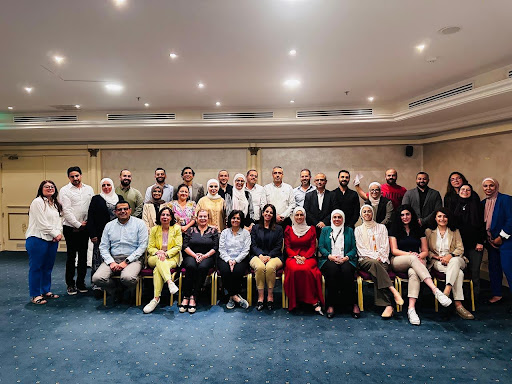
Launching the Early Grade Education Activity (ASAS) Program: A Collaborative Project from IREX and DG
IREX and Development Gateway: An IREX Venture (DG) are pleased to announce their collaborative work on the USAID-funded Early Grade Education Activity (ASAS) program. The ASAS program, which launched in August 2023 and will run through July 2028, empowers stakeholders within Jordan’s Ministry of Education (MoE) and throughout the country to deliver inclusive and holistic early-grade (EG) education. The project is designed to improve numeracy and literacy skills for Jordanian students from kindergarten to grade three.
Throughout the program’s implementation, IREX, which is spearheading the project, will improve early grade preservice education and in-service professional development for teachers, while DG will provide technical expertise and in-country field assistance to improve several education data systems. The program will facilitate improved access to timely, relevant, and high-quality data to inform strategic and meaningful education policies, practices, and reforms. This data is critical for EG education planning and will be used to evaluate core areas like school performance, student learning, teacher distribution, resource allocation, and training initiatives. It will also allow decision-makers to plan effective and practical interventions that will support student learning and development across Jordan, especially for underserved areas. Overall, the program will strengthen Jordan’s EG education data ecosystem and improve outcomes for public school students and teachers across the Hashemite Kingdom of Jordan.
Other partners supporting the ASAS program include School-to-School International, Queen Rania Teacher Academy, the International Rescue Committee, and the Change Agent for Arab Development and Education Reform.
Increasing educational data system effectiveness
The ASAS program is necessary for enhancing how education sector data is used and improving interoperability between data and digital tools. Having accurate and easier-to-use data empowers stakeholders to advance data-driven practices that meet the needs of students, parents, and teachers.
Stakeholders working in technical and coordination capacities within the MoE encounter frequent challenges relating to data access, quality, and scalability. Currently, the MoE uses three major education data systems to collect data on learning outcomes: school attendance, classroom assessments, and e-training for teachers and administrators. Making these three essential education data systems compatible with each other will address persistent problems related to data governance, sharing, management, and analysis. Addressing these issues will ultimately improve stakeholder coordination, prevent duplication in effort and other redundancies, and facilitate data-supported decision-making across the whole of the education sector.
ASAS moving forward
In the initial stage of the ASAS program, DG worked closely with stakeholders in Amman, Jordan to conduct a data landscape assessment of the existing education data to establish a comprehensive roadmap of stakeholder needs and priorities.
Following this assessment, the ASAS program will:
- Launch a new early grades undergraduate program at three public universities that is aligned with international standards and in-service teacher training;
- Institutionalize EG data quality assurance processes and assessments;
- Review and rationalize diagnostic assessment tools to cover holistic childhood development;
- Analyze the cost-effectiveness of teacher professional development; and
- Strengthen data systems utilized by the MoE and learning capabilities.

At a Glance | Evidence-Informed Policymaking: Education Data-Driven Decision Mapping in Kenya and Senegal
Development Gateway: An IREX Venture’s (DG’s) “At a Glance” series explores the highlights in DG’s white papers and other publications. In this installment of the series, we explore the white paper titled “Evidence-Informed Policymaking: Education Data-Driven Decision Mapping in Kenya and Senegal,” which was produced from a study exploring the education data systems in Kenya and Senegal. The study—which was done by DG in collaboration with our strategic partner IREX and supported by the William & Flora Hewlett Foundation—was conducted to ultimately inform further research and reform by gathering stories and perspectives from stakeholders to shed light on the complexities of education data supply, access, and utilization.
This work is essential because effective decision-making in education hinges on relevant, comparable, and accessible data that is managed through efficient information systems. These systems enable policymakers to discern effective strategies, optimize resources, monitor goal achievement, and foster trust. Therefore, well managed education data systems are key components for optimized education systems.
In the study, DG and IREX underscore the necessity of a harmonized approach to education data management. By prioritizing data governance, incentivizing data use, and ensuring interoperability of existing systems, Kenya and Senegal can enhance their education data ecosystems. These steps are crucial for fostering informed decision-making, optimizing resources, and ultimately improving educational outcomes. The insights gained from this study provide a valuable roadmap for future reforms and investments in education data systems.
Our study in Kenya and Senegal highlights the need for harmonized investment in three key areas:
- Data Governance: Establishing national standards for data collection, aggregation, indicator definitions, and data sharing protocols can significantly reduce redundancies, alleviate the reporting burden on school staff, and maximize the utility of existing data investments. Effective data governance ensures consistent and reliable data management, fostering a more accurate and comprehensive understanding of educational outcomes.
- Incentives for Data Use: Making data use a norm requires generating demand for timely, high-quality, and fit-for-purpose data in decision-making processes. This involves investing in human and technical resources; ensuring data meets key decision needs; and increasing awareness of the potential impact of data use in planning, policy design, implementation, and school-level operations. Establishing incentives for data use can drive a culture of informed decision-making, ultimately, leading to better educational outcomes.
- Interoperability of Existing Data Systems: The current education data landscape in Senegal and Kenya comprises numerous data systems, school surveys, and official statistics with limited exchange and interoperability. This leads to inconsistencies, mistrust among data users, and a fragmented view of the education system. Instead of investing in new data systems, efforts should focus on supporting the harmonization and interoperability of existing systems. This approach can create a more holistic view of education system performance and build on the foundations of effective data governance.
Dive deeper into these insights and learn more about education data systems in Kenya and Senegal in the white paper.
Explore our white papers

Demystifying interoperability
This paper discusses, in practical terms, what goes into implementing interoperable solutions in partnership with public administrations. Based on 20+ years of DG’s experience, the paper demystifies key components needed to build robust, resilient, and interoperable data systems, focusing on the “how” of data standardization, data governance, and implementing technical infrastructure.

Evidence-Informed Policymaking: Education Data-Driven Decision Mapping in Kenya and Senegal
Between December 2022 and February 2024, Development Gateway: An IREX Venture (DG) and IREX, funded by the William & Flora Hewlett Foundation, conducted research in Kenya and Senegal to explore the complexities of education data supply, access, and decision-making processes. Effective decision-making in education relies on reliable, comparable, and accessible data managed through efficient information systems, facilitating resource optimization and goal monitoring. However, many countries, including Kenya and Senegal, experience challenges with unreliable education data, limited data utilization for decision-making, and insufficient national capacity to manage and leverage data effectively. The research, employing DG's Custom Assessment and Landscape Methodology (CALM), involved a desk review, stakeholder consultations, interviews, and validation workshops. Rather than an evaluation or comprehensive diagnostic, the study aimed to gather diverse perspectives and stories from stakeholders to contribute to ongoing discussions, technical investments, and reform efforts. We present key findings in Kenya and Senegal, before comparing and identifying shared characteristics that may be useful to assess in other country contexts.

Élaboration De Politiques Fondées Sur Des Données Probantes: Élaboration De Politiques Fondées Sur Des Données Probantes
Entre décembre 2022 et février 2024, Development Gateway : an IREX Venture (DG) et IREX, avec le financement de la Fondation William & Flora Hewlett, ont mené des recherches au Kenya et au Sénégal pour étudier la complexité des mécanismes de fourniture des données sur l'éducation, l'accès aux données et les processus de prise de décision. Une prise de décision efficace dans le domaine de l'éducation repose sur des données fiables, comparables et accessibles, gérées par des systèmes d'information tout aussi efficaces, facilitant ainsi l'optimisation des ressources et le suivi des objectifs. Cependant, de nombreux pays, dont le Kenya et le Sénégal, sont confrontés à des défis liés au manque de fiabilité des données sur l'éducation, à une utilisation limitée des données dans la prise de décision et à la faiblesse de la capacité nationale à gérer et à exploiter les données de manière efficace. Cette étude, qui utilise la méthodologie CALM (Custom Assessment and Landscape Methodology) de DG, comprend un examen documentaire, des consultations avec les parties prenantes, des entretiens et des ateliers de validation. Plutôt que de réaliser une évaluation ou un diagnostic complet, l'étude visait à recueillir des points de vue et des récits diversifiés auprès des parties prenantes afin de contribuer aux discussions en cours, aux investissements techniques et aux réformes entreprises. Nous présentons les principaux résultats obtenus au Kenya et au Sénégal avant de comparer et d'identifier les caractéristiques communes qui pourraient s’avérer utiles d'évaluer dans d'autres contextes nationaux.
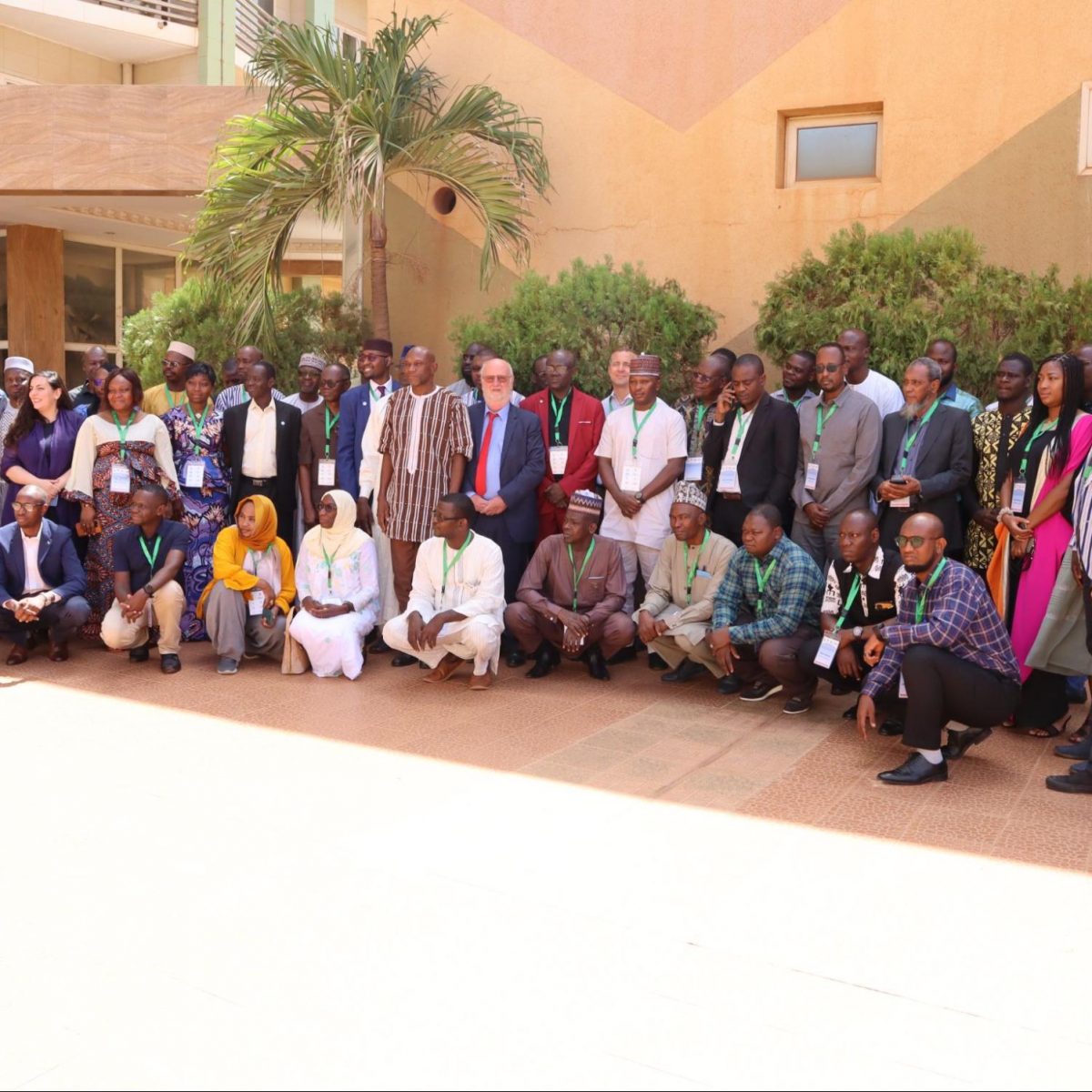
Great Green Wall Observatory: A New Data Platform to Support One of Africa’s Most Ambitious Efforts to Combat Climate Change
Over the past year, Development Gateway: An IREX Venture (DG) has worked with the United Nations Convention against Desertification (UNCCD), the Great Green Wall (GGW) Accelerator, the Pan African Agency for the Great Green Wall (PAGGW) and the 11 GGW state parties to build the Great Green Wall Observatory.
The Great Green Wall Observatory is the first-ever attempt at a multi-stakeholder, multipurpose digital platform to monitor the progress of the GGW Initiative, which seeks to combat climate change in Africa’s Sahara and Sahel regions. By providing access to finance and project management data, the Great Green Wall Observatory allows individuals to have oversight over the GGW Initiative projects being implemented in their communities.
By providing financial and project management information for the 11 GGW states, the Great Green Wall Observatory increases collaboration, accountability, and transparency on the activities and projects of the GGW Initiative and informs local and regional engagement between financial and technical stakeholders and frontline GGW communities. As an openly accessible data platform, the Great Green Wall Observatory opens up the possibilities for improved outcomes, coordination, and measurement of the impact of the existing and future GGW initiatives and paves the way for other climate action projects to grow and expand, as existing ones succeed.
In 2007, the African Union led the creation of the GGW Initiative in 11 countries: Burkina Faso, Chad, Djibouti, Eritrea, Ethiopia, Mali, Mauritania, Niger, Nigeria, Senegal, and Sudan. The mission of the GGW Initiative is to combat the effects of climate change in the Sahel region by restoring 100 million hectares of land, creating 10 million jobs, and sequestering 250 million tons of CO2 equivalents. The GGW Initiative is connected to two main agencies through the African Union: the Pan African Agency for the Great Green Wall (PAGGW), which coordinates GGW activities with the 11 National GGW Agencies, and the UNCCD GGW Accelerator, which was formed during the One Planet Summit in 2021 to fast track the implementation of the GGW Initiative.
In 2021, the GGW Initiative for the Sahel and the Sahara developed the Harmonized Results Indicator Framework (HRMF) to align the Pillars, Sub Pillar Objectives, and GGW Indicators as well as to standardize the definition and monitoring of the progress for the GGW initiative. The Great Green Wall Observatory, which is an online tool for the aggregation and visualization of financial data as well as the HRMF data, will help stakeholders track outcomes and impacts of the initiative. Portions of the data in the Observatory are from projects funded through One Planet Summit donors, including the World Bank, the European Union, the African Development Bank, the French Development Agency, the Green Environment Facility, the Global Climate Facility, and various United Nations Agencies. As of May 2024, the platform includes data on a total of 302 projects with a total commitment of USD 15+ billion.
Creating the Great Green Wall Observatory: A Collaborative Approach
When DG creates a digital solution, key prerequisites for the establishment and sustainability of data and information system are established. In building the Great Green Wall Observatory, we focused on the following metrics:
- Standardized data indicators and definitions availed through the GGW Harmonized Results Indicator Framework;
- Institutional mandate provided by the PAGGW and the respective National Agencies for the GGW;
- A system and data governance framework, provided by the Multi-stakeholder Data Task Force of the GGW; and
- Adequate technical and human capacity (e.g., people who are present and engaged in the project).
For data indicators, DG integrated data on financing and monitoring and evaluation indicators that the World Bank and the Africa Development Bank published into the Observatory. This data was drawn from the Harmonized Results Management Framework that the PAGGW adopted in 2012 to provide guidance on the design and measurement of progress for the Great Green Wall of the Sahara and the Sahel. The existence of the data standards and definitions is a key component of the Observatory.
A data governance framework had already been established through the GGW Data Task Force, which provided DG with a route for validating components of and co-creating the Observatory.
Finally, the GGW Initiative has a host of deeply engaged and invested partners who are eager to see the Initiative succeed. Some of partners with whom DG had the pleasure of collaborating included: UNCCD, World Food Programme (WFP), Food Agriculture Organization (FAO), IFAD, CIFOR-ICRAF, Sahara and Sahel Observatory(OSS), World Resources Institute, SOS Sahel, European Investment Bank(EIB), GIZ, World Bank, French National Research Institute for Sustainable Development(IRD), and the Austrian Development Agency (ADA).
The development of the Observatory also greatly benefitted from the open-source data that the World Bank and the Africa Development Bank published through the World Bank Policy on Access to Information and the AFDB IATI Data Portal. This data has allowed the Observatory to be a more robust platform which can generate more precise information than it would have been able to without this data.
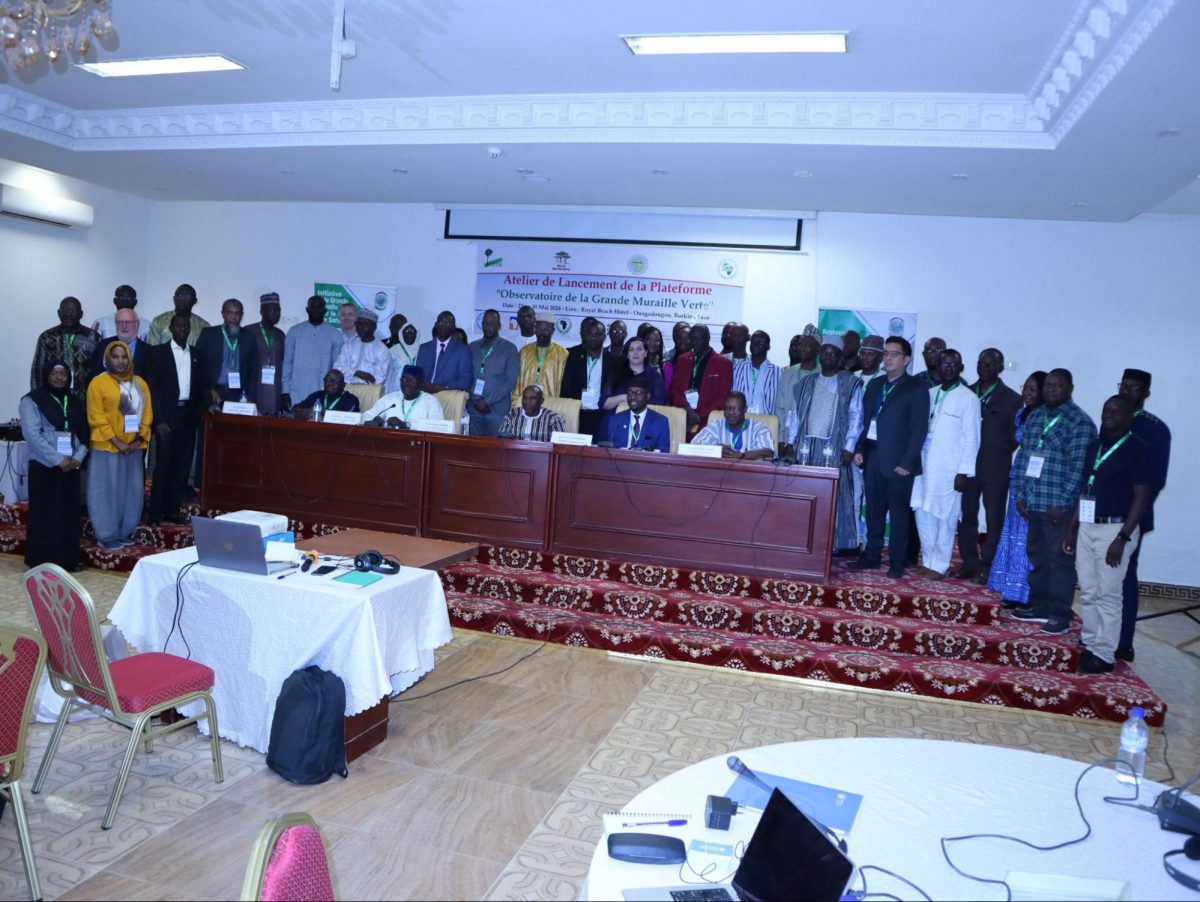
Through this project, DG has seen the importance of open and accessible data for global climate action. We encourage partners, colleagues, and stakeholders to commit to the provision of open climate action data as they are able, in order to allow greater collaboration, innovation, and success for climate action efforts. In order for us to truly combat climate change, we need open data and we need each other.
Next Steps
As we celebrate this milestone for the Great Green Wall Observatory, we look forward to continued collaboration and partnerships on capacity building across the board for continuous improvement, learning, and knowledge sharing. To support this capacity building, the first training in a series was held in Ouagadougou, Burkina Faso from May 27 and 31, 2024. Capacity building will be essential to help the teams maintain quality control and ensure continued data use from all GGW stakeholders—both of which are key ingredients for the sustainability of the platform.
DG will also offer continued technical support to the PAGGW team as they build country-specific data use cases on GGW data. Gathering these use cases will also allow the GGW leadership to make inclusive decisions that incentivize the participation from women and youth in GGW’s restoration and landscape management efforts.